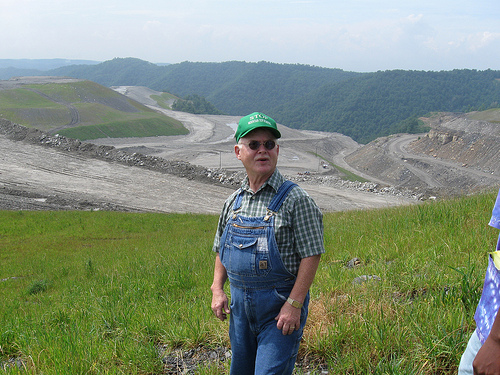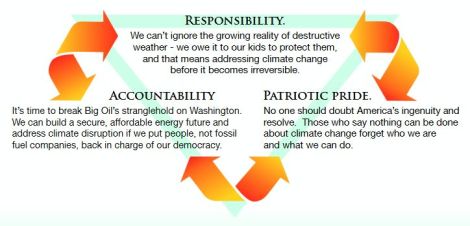
Listen up, climate communicators: Class is in session. (Photos by OHiShiapply and noolwlee / Shutterstock.)
There seems to be a subtle shift underway in the cultural valence of climate change. If the pendulum swung toward hyper-polarization and looney-tunery in 2009-2011, it seems to have reached its apogee and begun swinging back. It’s not just that a few politicians, including Obama, are daring to say the word, but that the public seems to have grown impatient with the squabbling and delay. A recent survey from Yale [PDF] found that “a large majority of registered voters (88%) support action to reduce global warming, even if it has economic costs.” Big Democratic donors are pressuring Obama to do more. There are even Republicans sticking up their heads here and there.
What explains it? Well, according to an interesting and somewhat counter-intuitive finding of political science, high-profile support by a party or president, contrary to many people’s deeply felt instincts about the “bully pulpit,” can serve to polarize an issue or bill more than build support for it. In 2008, climate was still vaguely bipartisan. President Bush and candidate McCain both attempted to co-opt rather than directly oppose climate concern. But in 2009, climate became closely associated with Obama and the Democrats. And so it became highly contested and controversial. After Dems got burned on cap-and-trade, however, climate faded out of national politics a bit. That, I think, may be what’s created a calmer, safer space for people to start talking about it again.
Whatever the reason, I’ve started hearing more buzz about politicians, local leaders, and businesspeople who want to speak out on climate. But if climate is going to re-enter the public conversation, it needs to be done in a smart way. And let’s face it, most politicians and local leaders don’t have a lot of great climate rhetoric at their fingertips. They could use help.
On that note, let me recommend this “Guide For Engaging and Winning on Climate” [PDF], put together by the consultancy Breakthrough Strategies & Solutions with help from several climate thinkers and leaders. It builds on previous surveys and thinking from several other groups, but boils things down to a short and highly digestible form.
(Yes, yes, I know there’s no “one size fits all” climate message. Good messaging is tailored to individual audiences. Nonetheless, people need a basic schematic to start from.)
Here are three basic American values and a tripartite message based on them:
Note that each of these three contains a variety of points and narratives within it, which can be adapted based on circumstances and audience:
- Appeals to responsibility include discussions of climate science and the threat of tipping points, but the most potent item here is extreme weather. The public sees the crazy weather and is already connecting it to climate — “climate disruption,” as the guide recommends in this context. Such expensive and dangerous weather will only get worse and it will hurt our kids and grandkids. (Appeals to the interests of children and grandchildren are, mawkish though some may find them, extraordinarily powerful.)
- Appeals to accountability include critiques of corporate excess and political influence, which are quite powerful these days. Big Coal and Big Oil are using lies and money to prevent progress; that’s something people instinctively understand, even if they know little about climate science.
- Appeals to patriotic pride include all the many stories about green innovation, entrepreneurialism, and international competitiveness. It’s about a common purpose, a common aspiration, which Americans thirst for at this dispiriting point in our history. And it’s about pride in our inventors and workers — nobody is more capable of building a better world.
All three of these value stories are rich in their own right, but the most important thing is that they support and reinforce one another. You’ve got your problem, your villains, and your hope; none works well in isolation but together they tell a coherent, forward-looking story.
And it’s simple! Anyone from a member of a town council to a mid-level manager at a big company can remember this: responsibility, accountability, and pride. So if you know people in your community, or have local politicians, who seem to care about climate, share this guide with them. It’s rough, ready, and based on good social science.




